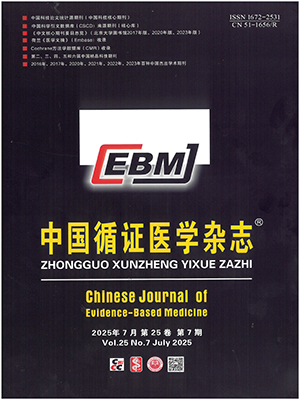| 1. |
曹永春. 会宁县河畔乡卫生院卫生服务质量提升研究. 兰州: 兰州大学, 2011.
|
| 2. |
徐明生. 关于卫生服务质量概念的思考. 医学与社会, 2003, 16(3): 19-21.
|
| 3. |
田丽春, 胡世云, 唐月华, 等. 云南农村孕产期保健服务质量的战略评估. 中国妇幼保健, 2005, 20(6): 650-651.
|
| 4. |
Kottke TE, George JI. Measuring Health Care Access and Quality to Improve Health in Populations. Prev Chronic Dis, 2010, 7(4): A73.
|
| 5. |
周爱庆, 李志勇. 盐城市盐都区基本公共卫生服务项目实施效果分析. 中国校医, 2012, 26(12): 911-912.
|
| 6. |
魏伟, 王旭辉, 罗阳峰, 等. 国家基本公共卫生服务项目实施效果评价. 中国初级卫生保健, 2013, 27(10): 1-2.
|
| 7. |
李赵, 谢石光, 罗兆宏, 等. 广西容县乡村卫生服务一体化管理实践与体会. 中国农村卫生事业管理, 2012, 32(6): 559-561.
|
| 8. |
郑晓瑛. 关于构建妇幼卫生管理评价方法的研究. 中国妇幼保健, 2001, 16(6): 333-336.
|
| 9. |
张奎力. 农村公共服务监管体系研究-以医疗卫生服务监管为例. 开封大学学报, 2010, 24(3): 17-21.
|
| 10. |
赵宝, 冷明祥. 常熟市居民城乡一体化基本医保运行情况分析与评价. 南京医科大学学报: 社会科学版, 2012, 12(5): 334-338.
|
| 11. |
刘晓丽. 山西省 47 所中心乡镇卫生院卫生服务质量外部评价研究. 太原: 山西医科大学, 2009.
|
| 12. |
吕军城, 王在翔. 我国农村基本公共卫生服务均等化现状及优化对策. 中国卫生事业管理, 2014, 31(2): 128-130.
|
| 13. |
张琼. 汕头市城乡居民基本医疗保险制度运行效果评估. 汕头: 汕头大学, 2013.
|
| 14. |
尹红云. 农村公共卫生服务中存在的问题及建议. 中国初级卫生保健, 2014, 28(7): 1-3.
|
| 15. |
徐虹, 吴茵茵, 郑卫军, 等. 公共服务产业理论视野下农村社区卫生服务模式的构建. 中国农村卫生事业管理, 2009, 29(1): 39-42.
|
| 16. |
夏颖, 史廷明, 刘家发, 等. 社区卫生服务健康管理发展现状及相关问题. 公共卫生与预防医学, 2013(1): 517.
|
| 17. |
Conrad P, De AM, Moses A, et al. Antenatal care services in rural Uganda: missed opportunities for good-quality care. Qual Health Res, 2012, 22(5): 619-629.
|
| 18. |
D’Ambruoso L, Achadi E, Adisasmita A, et al. Assessing quality of care provided by Indonesian village midwives with a confidential enquiry. Midwifery, 2009, 25(5): 528-539.
|
| 19. |
Urassa DP, Carlstedt A, Nystrom L, et al. Quality assessment of the antenatal program for anaemia in rural Tanzania. Int J Qual Health C, 2002, 14(6): 441-448.
|
| 20. |
Reeve C, Humphreys J, Wakerman J. A comprehensive health service evaluation and monitoring framework. Eval Program Plann, 2015, 53: 91-98.
|
| 21. |
Aldana JM, Piechulek H, Al-Sabir A. Client satisfaction and quality of health care in rural Bangladesh. Bull World Health Organ, 2001, 79(6): 512-517.
|
| 22. |
Majrooh M A, Hasnain S, Akram J, et al. Coverage and quality of antenatal care provided at primary health care facilities in the ‘Punjab’province of ‘Pakistan’. PloS One, 2014, 9(11): e113390.
|
| 23. |
Ahamadani FA, Louis H, Ugwi P, et al. Perinatal health care in a conflict-affected setting: evaluation of health-care services and newborn outcomes at a regional medical centre in Iraq. East Mediterr Health J, 2014, 20(12): 789-795.
|
| 24. |
王宏. 河北省农村医疗卫生服务可及性评价研究. 石家庄: 河北经贸大学, 2012.
|
| 25. |
朱宏. 婺源县农村特困人口医疗保障问题研究. 南昌: 南昌大学, 2007.
|
| 26. |
朱耀辉, 张福全, 邹霞, 等. 重庆市云阳县居民卫生服务现状分析. 重庆医学, 2010, 39(10): 1269-1271.
|
| 27. |
Domes T, Szafran O, Bilous C, et al. Acute myocardial infarction: quality of care in rural Alberta. Can Fam Physician, 2006, 52(1): 68-69.
|
| 28. |
邓发基, 罗良德. 对农村公共卫生服务问题的探讨与建议. 中国慢性病预防控制管理论坛, 2011.
|
| 29. |
李志勇. 盐都区农村基本公共卫生服务项目管理模式及效果分析. 中国农村卫生事业管理, 2008, 28(8): 611-613.
|
| 30. |
Gathara D, Opiyo N, Wagai J, et al. Quality of hospital care for sick newborns and severely malnourished children in Kenya: A two-year descriptive study in 8 hospitals. BMC Health Serv Res, 2011, 11(1): 138-139.
|
| 31. |
田丽春, 胡世云, 唐月华, 等. 云南农村孕产期保健服务质量的战略评估. 中国妇幼保健, 2005, 20(6): 650-651.
|
| 32. |
冯凌. 大力推进医疗卫生服务体系建设. 社会主义论坛, 2013, (9): 29-30.
|
| 33. |
程锦, 王军生. 北京市通州区村卫生室卫生监督现状及分析. 中国卫生监督杂志, 2013, 20(4): 350-353.
|
| 34. |
葛智馨, 陈英耀, 黄葭燕, 等. 我国农村基层医疗机构卫生服务质量管理问题研究. 中国卫生质量管理, 2013, 20(3): 5-8.
|
| 35. |
Zaky HHM, Khattab HAS, Galal D. Assessing the Quality of Reproductive Health Services in Egypt via Exit Interviews. Matern Child Health J, 2007, 11(3): 301-306.
|
| 36. |
Williamson JW, Fehlauer CS, Gaiennie J, et al. Assessing Quality of Ambulatory Care A Comparative Analysis in Rural versus Tertiary General Medical Clinics. Am J Med Qual, 1991, 6(1): 8-15.
|
| 37. |
陈烈平, 唐程翔, 郑锦焕. 基层医疗卫生服务质量评估及其影响因素探讨. 中国农村卫生事业管理, 2011, 31(2): 119-122.
|
| 38. |
Jacobalis S. Basic issues related to quantity and quality of health care, and quality assurance in Indonesia. Aust Clin Rev, 1988, 9(3-4): 149-154.
|
| 39. |
Pembe AB, Carlstedt A, Urassa DP, et al. Quality of antenatal care in rural Tanzania: counselling on pregnancy danger signs. BMC Pregnancy Childbirth, 2010, 10(1): 1.
|
| 40. |
McDevitt J, Melby V. An evaluation of the quality of Emergency Nurse Practitioner services for patients presenting with minor injuries to one rural urgent care centre in the UK: a descriptive study. J Clin Nurs, 2015, 24(3-4): 523-535.
|
| 41. |
Magoma M, Requejo J, Merialdi M, et al. How much time is available for antenatal care consultations? Assessment of the quality of care in rural Tanzania. BMC Pregnancy Childbirth, 2011, 11(1): 1.
|
| 42. |
Mwaniki P, Ayieko P, Todd J, et al. Assessment of paediatric inpatient care during a multifaceted quality improvement intervention in Kenyan District Hospitals–use of prospectively collected case record data. BMC Health Serv Res, 2014, 14(1): 1.
|
| 43. |
Pembe AB, Carlstedt A, Urassa DP, et al. Quality of antenatal care in rural Tanzania: counseling on pregnancy danger signs. BMC Pregnancy Childbirth, 2010, 10(8): 35.
|
| 44. |
王成岗. 循证医学证据分级体系. 中医/中西医结合循证医学方法研讨会会议材料. 2014.
|
| 45. |
Li XX, Zheng Y, Chen YL, et al. The reporting characteristics and methodological quality of Cochrane reviews about health policy research. Health Policy, 2014, 119(4): 503-510.
|
| 46. |
徐明生. 农村乡镇卫生院卫生服务质量评价的理论与实践研究. 武汉: 华中科技大学, 2004.
|
| 47. |
李立明, 黄悦勤, 刘建平. 临床流行病学. 北京: 人民卫生出版社, 2014: 55.
|




